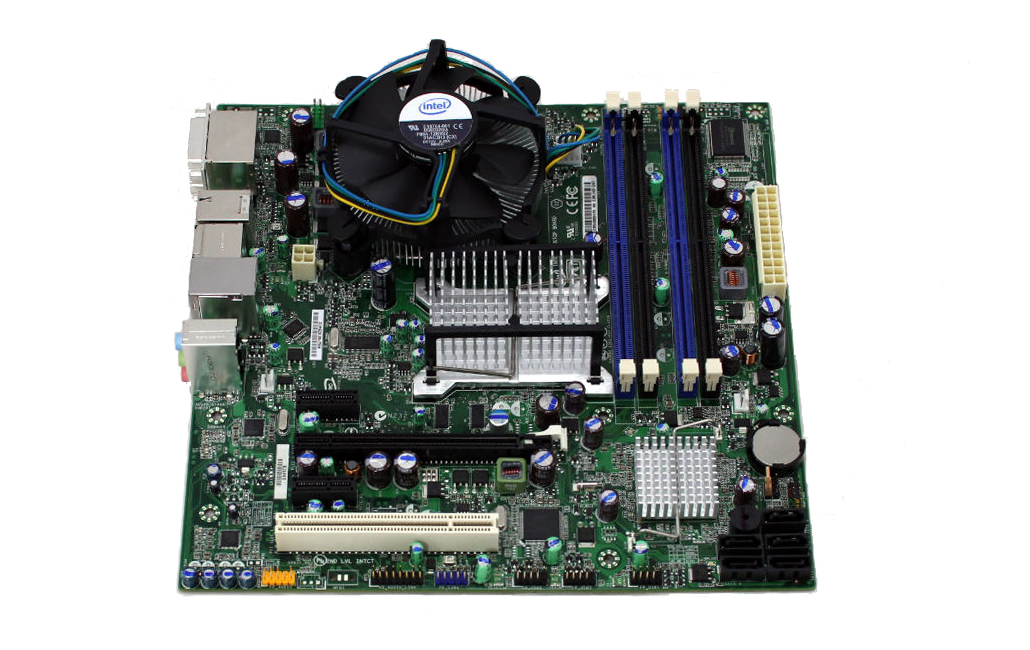Intel vPro: Three Generations Of Remote Management
It's common to manage PCs remotely in today's business environment. Intel's vPro technology aims to simplify that task by giving IT professionals hardware-level tools to make remote management easier. Today we look at three generations of vPro.
Intel Core 2 Duo E8500 And DQ45CB: The Wolfdale Generation
The Core microarchitecture was a real turning point for Intel, which eventually allowed the company to aggressively push clock speeds on a 45 nm process, providing great performance and solid power-saving features. The Wolfdale-based Core 2 Duo E8500 is a 65 W part running at 3.16 GHz.
One big difference between the Core 2 E8500 we're testing and the Clarkdale and Sandy Bridge designs is a lack of on-package or on-die graphics, which enables remote KVM support on those latter two processor families. Instead, Core 2 Duo depended on a graphics engine built into the Q45 core logic.
Along with its Core 2 Duo, Intel sent us a DQ45CB motherboard to use in our comparison. In its day, the Q45 board utilized an Intel Graphics Media Accelerator 4500, enabling both VGA and DVI outputs that could be used simultaneously across dual independent displays. Audio was provided by a 5.1-channel codec, which was more than most business users needed anyway. The relatively large northbridge heatsink was needed, since that component hosted graphics and memory control duties, dissipating as much as 17 W on its own.
Some of the board's limitations are starting to become obvious. First, expansion is provided by one PCI, two PCIe x1 and one PCIe x16 slot. Many business systems do not utilize add-in cards at all, so this isn't that big of an issue. However, it could be detrimental if you're building engineering workstations that require more discrete hardware. Second, you can only install up to 8 GB of DDR2 memory. With Windows 7, 64-bit operating systems are much more popular, and 4 GB is now the absolute minimum most businesses use for solid multi-tasking performance. Power users working with Excel, Access, and PowerPoint likely want more than 4 GB of RAM.
The DQ45CB comes standard supporting Intel AMT 5.2, which does not support Intel's KVM Remote Control functionality. When Intel moved the GPU on-package and then on-die in subsequent generations, it was able to tie in KVM-over-IP as well. Later in this piece, we will look at KVM Remote Control in more depth.
Get Tom's Hardware's best news and in-depth reviews, straight to your inbox.
Current page: Intel Core 2 Duo E8500 And DQ45CB: The Wolfdale Generation
Prev Page Unique vPro Hardware Requirements Next Page Intel Core i5-670 And DQ57TM: The Clarkdale Generation-
cngledad Can I suggest an article comparing different remote access tools we can use? From the freeware TeamViewer, VNC Viewer to such things like WebEx? I think that would be a very good topic.Reply -
One correction: DQ57TM *does* contain a v1.2 TPM, the same as found on DQ67SW and DQ67EP. It's required to be vPro compliant (necessary for Intel TXT).Reply
-
jhansonxi Nifty but I don't like the single-vendor lock-in. I can see real improvements in IT efficiency if this was combined with AoE. Would like to see SSH support, however.Reply -
extremepcs Hopefully they have improved the activation mechanism. Kind of a PITA if you don't buy a certificate from a trusted CA. I used an internal cert and had to activate each machine by booting from a flash drive.Reply -
chovav If my hard drive is encrypted using TrueCrypt pre-boot authentication, would I be able to fill in the password using Intels vPro?Reply -
jowunger The voice of the guy in the video is bad. The guy talks like he is speedreading a book...Reply -
cangelini cdw-vproOne correction: DQ57TM *does* contain a v1.2 TPM, the same as found on DQ67SW and DQ67EP. It's required to be vPro compliant (necessary for Intel TXT).Reply
Fixed, thanks!
